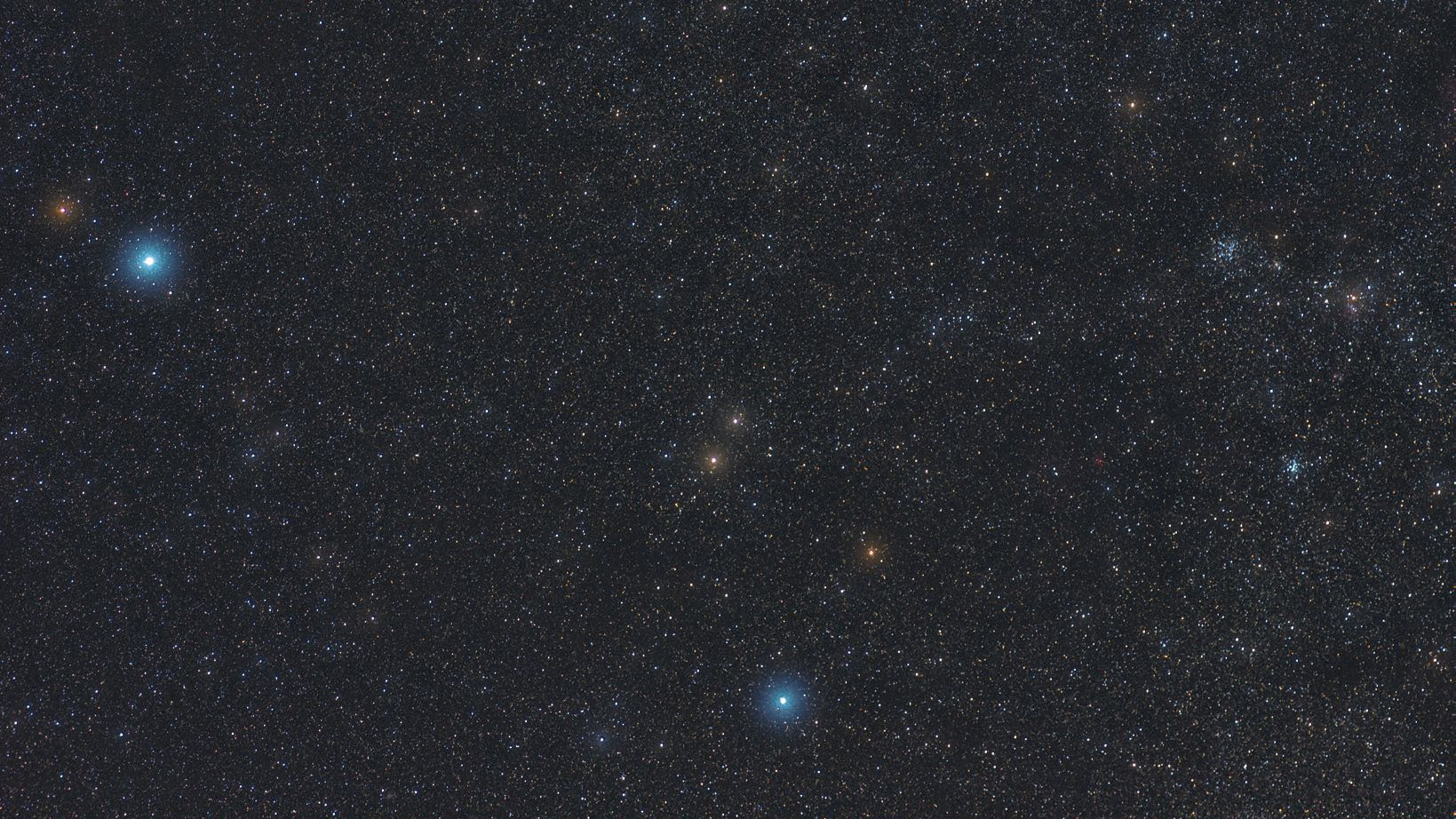Non-identical triplets and a flying fish
Location is everything: in the middle of the Milky Way, Auriga reveals three Messier star clusters which are very close to each other.
 The constellation of Auriga is home to many impressive star clusters.
Marcus Degenkolbe
The constellation of Auriga is home to many impressive star clusters.
Marcus DegenkolbeWhichever instrument you use to navigate the constellation of Auriga, the three Messier star clusters are the absolute highlights. And you’ll find that even with binoculars, there are things to discover about them and around them.
Three in one go
If your binoculars’ apparent field of view is 7° or more, then it’s possible to see these three large star clusters together. To find them, it is best to set off from Elnath (β Tau) and head slowly north-east toward θ Aur. About halfway along this imaginary line and to its east you will find M37, then a little to the west is M36, and finally a further 2° north-west lies M38. At first glance, they look like triplets: round fuzzy flecks of about the same size. But with a little patience, you will be able to work out a number of differences in their size and brightness, as well as the resolvability of individual stars. For example, M36 appears in 10×50 binoculars as a dense star cluster, but smaller than its neighbours and about as bright.
With careful observation, a much fainter and more compact nebulous speck stands out 0.5° south of M38, this is the open star cluster NGC 1907. At seven times magnification, this still appears to be almost point-shaped, which is why higher magnification and a tripod are worthwhile here.
 There are some interesting star clusters close together in the south of the constellation of Auriga, which can also be explored with binoculars. J. Scholten
There are some interesting star clusters close together in the south of the constellation of Auriga, which can also be explored with binoculars. J. ScholtenFishing bait
Something quite different is this most striking conglomerate of stars in Auriga, 3° southwest of M38. Here, five stars of between magnitude 4.5 and 6.6 form an asterism occupying an area of around 40'×15', which was christened the Flying Minnow by American observers. Although it is not a physical object, and the stars are only coincidentally grouped together in the sky, this asterism has been catalogued several times, among others as Melotte 31 and Harrington 4.
Directly east of the Flying Minnow, if the conditions are good enough, you will come across a faint nebulous spot, the open cluster NGC 1893. This is surrounded by galactic nebula IC 410 which is, however, not visible with binoculars.
Author: Kay Hempel / Licence: Oculum-Verlag GmbH
